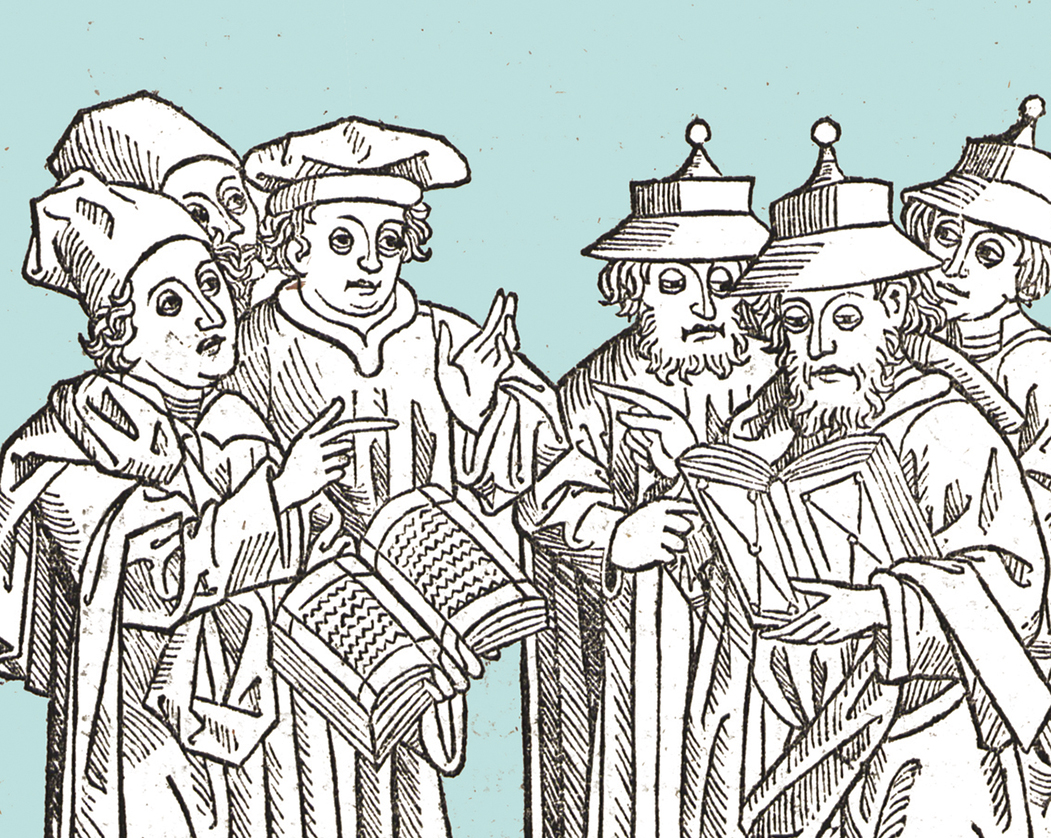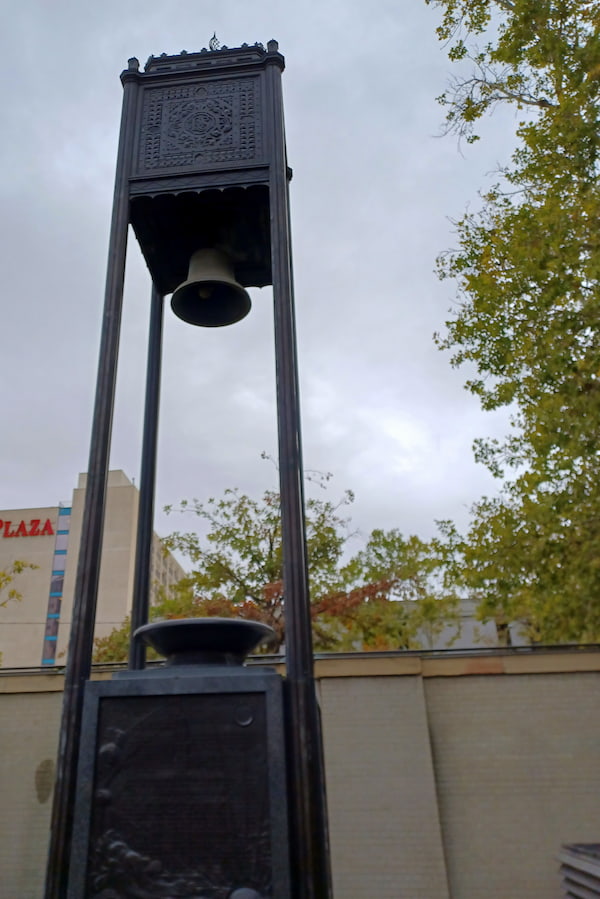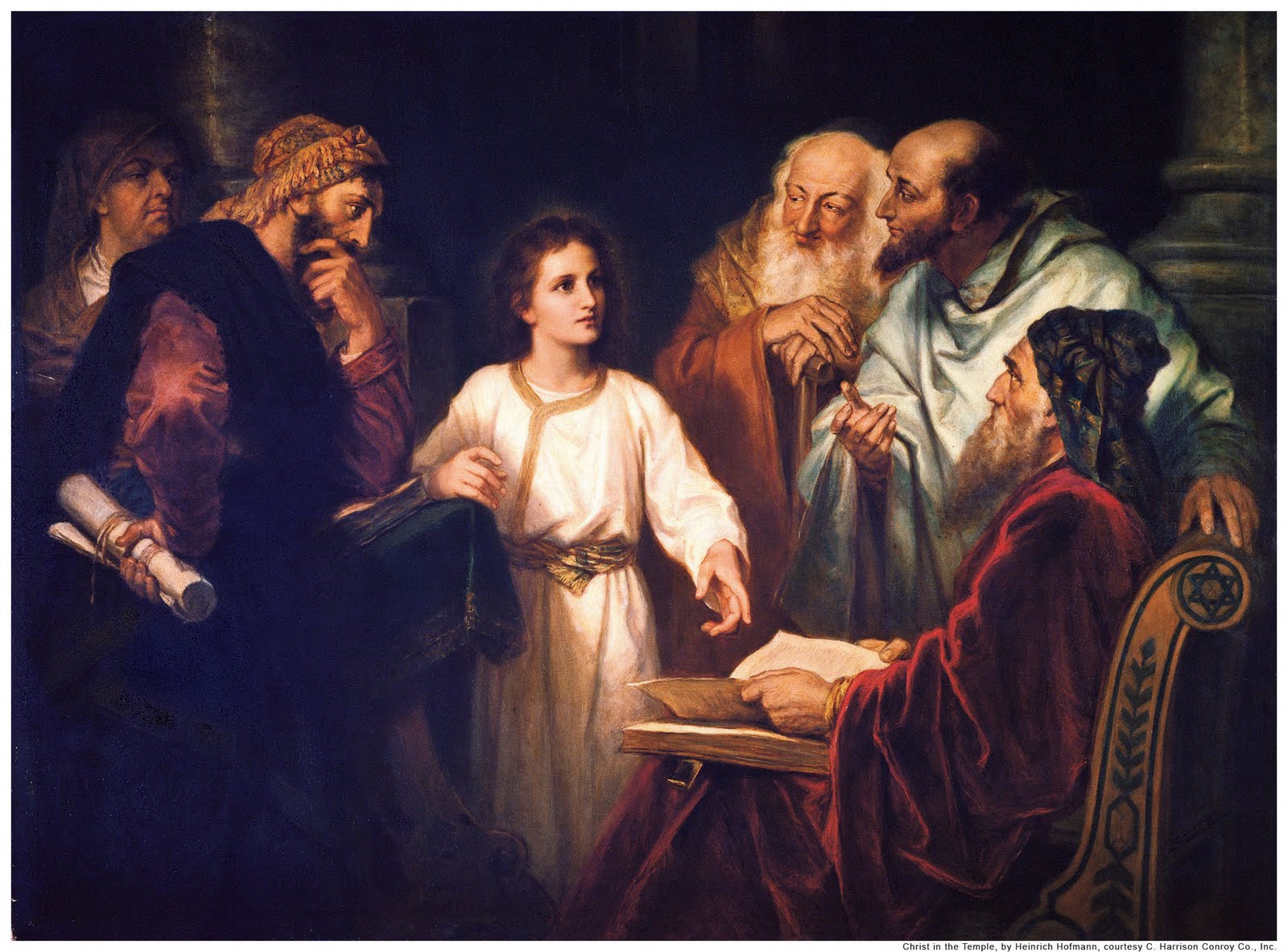Category: Latter-day Saint Thought
-
Christ and Community, 2: Striving for the Ideal
It was a Jehovah’s Witness many years ago that pointed out to me the connection between “these my brethren” in Matthew 25:40 and Jesus calling those who “do the will of God … my brother, and my sister, and mother.” (Mark 3:31-35, Matt 12:46-50, Luke 8:19-21. See the comments in my last post). I’m interested…
-
A History of Young Women’s Organizations in the Church
The Church Historian’s Press recently published a history of the Young Women’s organization in the Church entitled Carry On: The Latter-day Saint Young Women Organization, 1870–2024. In connection with the release of this landmark study, Lisa Olsen Tait discussed the book in a recent interview at the Latter-day Saint history blog From the Desk. What follows…
-
Christ and Community: Introduction
I want to share a few thoughts on Christianity and community building. I know this is a big topic discussed for thousands of years, but I want to give my two cents anyway despite not being a trained theologian. In my amateur opinion, I do think that Jesus said that community building was important and…
-
CFM 4/14-4/20: Poetry for “I Am He Who Liveth, I Am He Who Was Slain”
The Come Follow Me lesson for the week ending on April 20th, Easter, takes a break from the section order in the Doctrine and Covenants to focus on how Christ is portrayed in the scripture. The lesson focuses on three attributes of Christ’s role: His living nature, his gift of the resurrection to all of…
-

Religions on Trial, Then and Now
Note: This was in the queue before I realized that it was falling on General Conference weekend, so it’s not in response to anything said over the pulpit. I recently read an account of the three great medieval Jewish-Catholic disputations (Judaism on Trial, McCoby). These were debates arranged by the Christian authorities where the top…
-
Samuel Weber on Adam-God Doctrine
One observation about Brigham Young—particularly when it comes to his most controversial ideas, like the Adam-God teachings—is that he tended to take ideas from Joseph Smith and then amplify them. The priesthood and temple ban on individuals with black African ancestry, for example, can be seen as an expansion of things Joseph Smith accepted and…
-
The Voice of the Lord: A Review
BYU published a few books late last year in connection with the Doctrine and Covenants. Among these is The Voice of the Lord: Exploring the Doctrine and Covenants, edited by Alexander L. Baugh. The book is a collection of essays previously published by BYU in a variety of forums (Sydney Sperry symposium publications, Religious Educator…
-
Making Sense of Prophecies: An Update
A while ago, I published a series of posts, “Making Sense of Prophecies,” that connected my academic research to the prophecy of “Lutius Gratiano.” (You know the one: “The old true gospel and the powers thereof are lost….”) Then the editor of the Journal of Mormon History suggested the topic might work as an article.
-

CFM 4/7-4/13: Poetry for “ Lift Up Your Voices … to Declare My Gospel”
For a lesson titled “Declare My Gospel”, the individual sections don’t seem to focus as much on missionary work as you would think. Instead, the missions discussed are more like the statement often attributed to St. Francis, “Preach the gospel. If necessary use words.” Of course, the problem with preaching through actions, even though they…
-
Joseph Smith and the Ancient Theology: Conclusion
So I wanted to wrap up a few more thoughts I mentioned in my last post, but at the request of the TS bloggers, I put them over at the Juvenile Instructor. So you can check them out over there. One on BH Roberts’s problematic claims of Platonism corrupting Christianity, another noting problems with Stephen…
-
The Confessing Church
People are probably going to bring up the Confessing Church frequently, so it’s best to get some things straight at the outset.
-
On a New Edition of Teachings of the Prophet Joseph Smith
When I was on my mission, there were a few hot commodities on the book market that most of the missionaries wanted to get their hands on. Foremost among them were Teachings of the Prophet Joseph Smith and Joseph Smith: Rough Stone Rolling, with bookstores in Nauvoo, Illinois being the location in my mission where missionaries could…
-

CFM 3/31-4/6: Poetry for “Jesus Christ Will Gather His People”
The concept of gathering maybe one of the most-changed concepts in LDS belief. In D&C 29 the call to be “gathered in unto one place upon the face of this land” clearly refers to a physical gathering, where members of the church lived near each other. Later the number of places of gathering increased, and…
-

When are We “Done” with Book of Mormon Translations?
Book of Mormon in Elvish per Scripture Central In terms of translating sacred scripture, we have nothing on the Protestants. One of the go-to sources for describing and cataloging languages, the publication Ethnologue, was originally started (and is still used, I believe) as a tool to help Evangelical Christians record which languages still needed Bible…
-
On Section 25
The reading associated with this week in “Come, Follow Me” includes section 25 of the Doctrine and Covenants, the revelation addressed to Emma Hale Smith. Luckily, the Latter-day Saint history blog From the Desk published an interview with Robin Jensen on that very subject, including a great discussion about how the revelations were a collaborative…
-

Civil religion and imperial cult
What does it mean to abstain from food polluted by idols? It’s one of the more pressing questions that we face today.
-

CFM 3/24-3/30: Poetry for “All Things Must Be Done in Order”
It’s hard to argue with the phrase “all things must be done in order.” For most rational people, doing things in order is important. But, what exactly do we mean by ‘order’? Whose order? Does the order need to be torn up sometimes? Order suggests the arrangements and procedures that support society and our institutions.…
-

The Former Bell at Temple Square
The Church recently announced that “The southwest corner of Temple Square has reopened to the public. Landscaping is still underway, but visitors can enjoy seeing three newly restored monuments.” As I have walked into the Tabernacle for rehearsals of the Bells at Temple Square each week, I have been a bit sad to see that…
-
Hunger
During those infrequent occasions when I’ve been able to teach pre-modern history and literature, one of the surprisingly consistent elements of the material we look at is hunger.
-

CFM 3/17-3/23: Poetry for “Seek for the Things of a Better World”
Most of this lesson comes from D&C 25, the revelation in which Emma Smith is called to select the hymns for the Church’s first hymnal. But that calling is a small part of a revelation meant to provide Emma with help and support, as well as guidance in where she should devote her efforts—in “the…
-
The 1930s Crisis in the Church in Mexico
The history of the Church around the world is still a developing field and while Mexico is one of the countries that has received attention, Fernando Gomez‘s A Documentary History of the Church of Jesus Christ of Latter-Day Saints in Mexico, 1875-1946 shows that there is still more to learn and discover about the history of…
-
This is bad for the Church
Personalist autocracies are bad for 99.99% of the people who live under them. By enabling bribery and corruption, they’re a significant drag on the economy. A few people get rich, while everyone else ends up worse off. By promoting incompetent but loyal functionaries, they make it difficult to accomplish important government tasks or provide the…
-
A Review: The Doctrine and Covenants Study Guide: Start to Finish
As I’ve been working on my annotated Doctrine and Covenants this year, one resource I’ve enjoyed reading is The Doctrine and Covenants Study Guide: Start to Finish (Salt Lake City: Deseret Book, 2024), ed. Thomas R. Valletta. The book is formatted as the text of the Doctrine and Covenants with comments in wide margins and…
-

CFM 3/10-3/16: Poetry for “The Rise of the Church of Christ”
I’m currently spending time looking at the idea of ‘restoration’—probably the key idea that early members of the Church sought after. Our denomination is, and was then, considered a restoration of Christ’s original church. This lesson, covering mainly D&C 20, sometimes called the ‘constitution of the church, looks further at exactly what this means, and…
-
A Review: Seven Visions: Images of Christ in the Doctrine and Covenants
The recently-published book Seven Visions: Images of Christ in the Doctrine and Covenants by Adam S. Miller and Rosalynde F. Welch is a fantastic opportunity to listen in on a conversation between two brilliant theological minds as they explore seven different sections of the Doctrine and Covenants with a Christological focus. The book is structured as…
-

CFM 3/3-3/9: Poetry for “Learn of Me”
It might seem strange that the title of a lesson based on D&C 19, apparently written as Martin Harris struggled with wether to mortgage his farm to pay for the publication of the Book of Mormon, should be titled “Learn of Me.” But D&C 19 doesn’t talk about mortgages or farms, and the more I…
-

When Religions Rebrand: The Community of Christ and the Nation of Islam
What happens when a leader of a faith does not actually believe in its founding precepts? Presumably this kind of situation would be rare, but I recently finished reading a history of the Nation of Islam, and was struck by the parallels and sometimes contrasts between its recent history and that of the Community of…
-
Annotated Doctrine and Covenants, 10 – 19
Continuing my series of annotated and formatted text of the Doctrine and Covenants, here are D&C 10 – D&C 19. As noted before, be aware that this is still a very rough draft based on the 1921 edition (for copyright reasons). I have a lot of work to go before I plan to look into…
-
It’s bad
In polite society we treat elections as an opportunity to advance our self-interest or express policy preferences, about which reasonable people can disagree. And most of the time that may be true and we’re left to choose between various imperfect options, but in this era I think the dwindling tribe of values voters has it…
